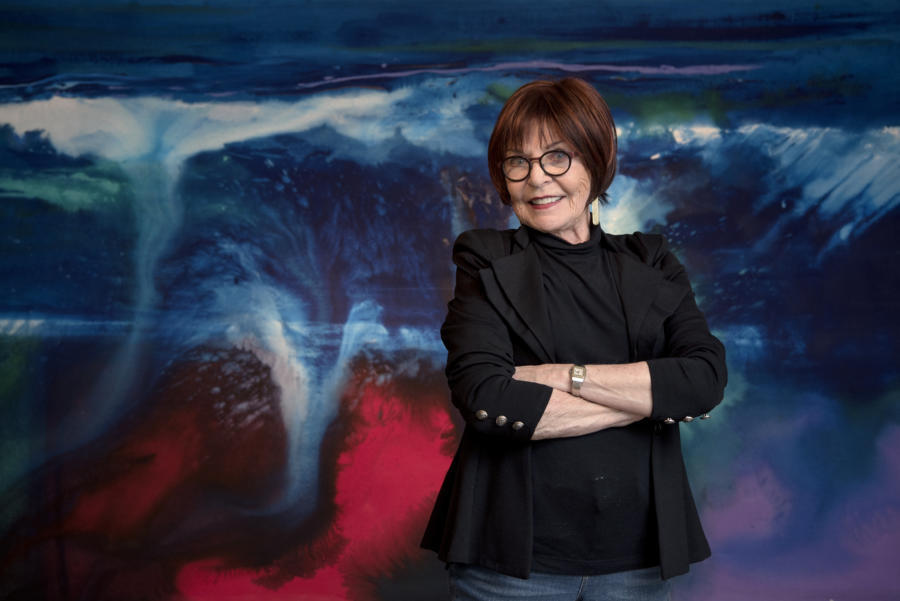Art curators do more than create brilliant montages in galleries for your viewing and purchasing pleasure.
They outfit hospitals, hotels, yachts, and then some.
Their craft is a meticulous one, requiring a level of expansiveness and depth unlimited by genre, or culture, or trend.
They must be willing to peer into the mystery of the artist and pave the path for expository and explosive creations to be seen. It is placement, it is color, it is the exact moment, size, shape, at just the right angle that can captivate one person or a thousand.
They are the A & R guys and gals of the art world, with a je ne sais quoi to introduce an artist to the world.
To understand the benefits of what lies within the special repository that is the art curator, we’ve curated 😉 some insightful questions for a deep dive for the next conversation you have with your art curator.
“Cultural confinement takes place when a curator imposes his own limits on an art exhibition, rather than asking an artist to set his limits.”
―Robert Smithson
How do you select pieces for an installation or venue
Consensus is in. If a curator is not upgrading the venue with their brand of genius with relevance and avant-garde something is missing.
It’s as challenging as making a blank piece of paper speak from the ethers, and cherry-picking the precise words to make the paragraph sing.
For a curator every piece chosen matters. The value must be added whether curating for a client home or a metropolitan museum that will garner international attention. Every piece chosen must build on the next. If a piece somehow dims the ones chosen before it, it may be best in another venue.
The work has to fit the space, the trite round hole square peg is befitting here. It doesn’t mean the pieces have to lack uniqueness and variation, just that certain pieces will unanimously work better with the angles of a room or the size of the wall. Curators are like indoor weathermen and women, the doppler radar of a venue considers the lighting, temperature, humidity levels, and what certain works can be subject to in terms of hot and cold in said venue space.
Ask your curator what the rules of thumb for preservation are
Preservation is part and parcel of the role of a curator. After all, to curate, is to be responsible for caring for something or someone. Caring is a loaded word as a parent to a child you are responsible for keeping that child alive, protecting him from hurt, harm, or danger, making sure he is well-mannered and presentable, keeping him healthy, and of sound mind and this is no simple task.
Curators do the same from finding new artwork, sussing out the fakes and frauds, storing and reconditioning, authenticating, adapting to the changing society and how it interacts with art.
According to Hans Ulrich Obrist curator, basic rules are to safeguard art heritage, select new work, connect to art history and display that work.
How are you going digital in a post covid world and still engaging audiences?
The pandemic has highlighted all of the connection points at the art curator’s disposal for meeting her clients and audience needs.
Though there was a bit of a learning curve it wasn’t an impossible task to forgo public exhibitions in exchange for digital art, wine, and cheese.
Curators who are adaptable and flexible are using social media and digital exhibitions to stay in contact and bring live museum and gallery tours right into your living room. Some major art events over the last year were forced to go digital or be canceled.
As artists and curators have weathered the pandemic and covid-19 era lessons are invaluable. Art and gallery tours should be available online covid or not.
Virtual exhibits are here to stay along with live streaming art curator collections. Add these lifestreams with a chat feature and connection doesn’t have to stop, nor does the conversation that brilliant art is known for.
Ask how co-curators work together for maximum output in the gallery
Each curator has his own background and expertise lending him to strengths and weaknesses that enhance the group work environment. One curator will see something another does not, and still, another can flesh out the vision even further.
It is true three can be a crowd, but one or two can be limiting in the creation of the best curatorial experience. Curators co-curating is an opportunity at monumental collections and displays. Ensuring that what should be kept is not turned away and what is kept is displayed in the most appreciating way possible.
In large galleries, each curator has his own department he curators, one may be responsible for biblical relics, the other African art, and the other portraiture.
The best way for a new artist to get on your radar?
Curators, like film and TV show writers, are always looking for the next plot twist.
Whose got the character to bring the show’s present theme and elements together or who can spice up what may be losing steam.
Artists who go against the grain are often those who pique the interest of the curator seeking to erase the lines and add gusto and flare to their collection. A level of drama in a sitcom works just as well for the curator in a venue.
Does your artwork teach something old in a new way?
Is it courageous in the face of social norms, daring to go the narrow when all others take the broad road?
Is it relatable while also being nuanced?
Can it spin a word into a labyrinth of conversation twittering from gallery wall to gallery wall?
And if you have a specific art curator in mind, like anything else, when the goal is an earnest connection send them a personal invitation to your next show. Make sure you do your homework on the curator as well and whenever a door is open for an art walk or public exhibition mingle and network for the most organic entrance into the door.
Ask your curator about the highs and lows of getting an artist a global audience?
“An exhibition is in many ways a series of conversations. Between the artist and viewer, curator and viewer, and between the works of art themselves. It clicks when an exhibition feels like it has answered some questions, and raised even more.”
―Thelma Golden
The art curators’ day-to-day activities bleed into all else. The way a curator gets global attention on an artist is the same way a curator works to break the barriers of the display. If a curator can position a work just right, in front of the right pair of eyes, with also the right connections, because let’s face it, a well-connected art curator is going to have a higher likelihood of crossing an artist beyond their borders.
But when and how an artist is displayed is the difference between being seen and drowning in the backdrop. For instance, you’re a new artist and your curator wants eyes on your work and she has a private client with a high volume venue like a 5 or 6-star hotel that houses many high-powered people.
Sebastian Goldspink in Art Hub interview had this to say when you get a space that isn’t an ordinary gallery. It’s an opportunity and a good curator would “resist the urge to make the space look like a gallery” but instead allow the flaws and shortcomings to manifest the space into what it can be and should be, not what it isn’t.
Similar to the gold in the cracks of Japanese Kintsugi, the cracks make the art. The nonconformist spaces that fall out of the bounds of traditional galleries ultimately become what Goldspink says, are some of the most “impactful and memorable exhibitions”.
Should a curator do right by a space like this, artists chosen for such spaces have a stage set that could catapult them into the next stage of their career.
“In the years that I worked in museums, first as a summer student and eventually as a curator, one of the primary lessons I learned was this: History is shaped by the people who seek to preserve it. We, of the present, decide what to keep, what to put on display, what to put into storage, and what to discard.”
―Susanna Kearsley
Naming the stars
Curators are the sculptures of the constellations that become of a venue, gallery, or exhibit. They painstakingly determine how you’ll see the works glow and what you’ll take away from the proverbial star gazing. As Charles Saatchi said, “When you see something special, something inspired, you realize the debt we owe great curators and their unforgettable shows – literally unforgettable because you remember every picture, every wall, and every juxtaposition.”


